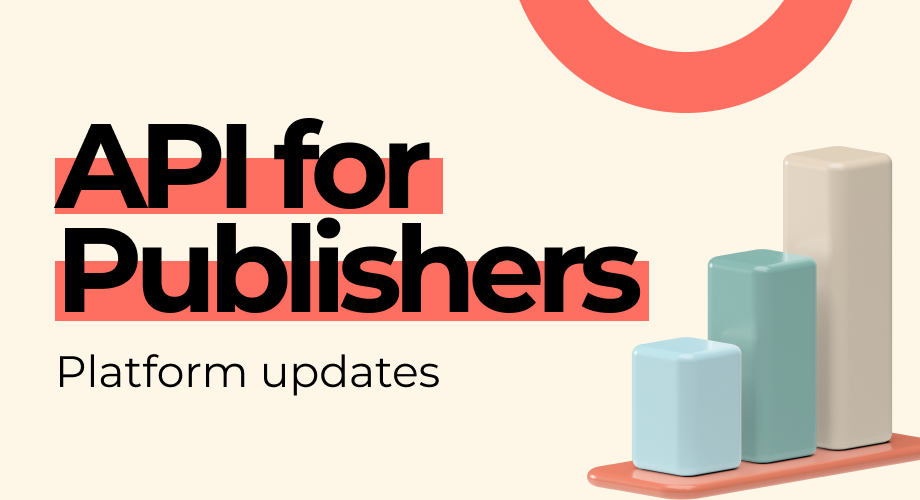Have you ever questioned why your website's revenue stays the same or even decreases in spite of major attempts to increase traffic? Making minor, seemingly unimportant mistakes can significantly lower your earnings because website monetization is a complicated process.
The top five errors that lower website revenue will be examined in this post, along with workable fixes. We'll offer practical advice to assist website owners improve their monetization tactics and optimize their revenue potential, covering anything from poorly positioned advertisements to ignoring mobile optimization.
Common Pitfalls in Website Monetization: What Are You Overlooking?
Placing ads in ineffective places is one of the most common blunders made by website owners. Poor user experience and reduced click-through rates (CTR) are frequently the results of improper ad placement, which eventually reduces revenue. The placement of these advertisements on your website can either increase or decrease your revenue, regardless of whether you use native ads, PPC advertising, or the Google Display Network.
Another critical issue is ignoring mobile responsiveness. In the current digital environment, mobile users account for a significant amount of all website traffic. This audience is not reached by websites that are not mobile-friendly, which results in high bounce rates and lost sales chances. As mobile traffic continues to surpass desktop visits worldwide, this becomes increasingly more urgent.
One often overlooked opportunity in monetization is the use of smart tags from Adoperator, which do not require the use of banner space. This offers an efficient alternative to traditional methods by allowing website owners to create their own banners and use them with smartlinks, opening new revenue streams without the clutter of excessive ads.
How to Optimize Ad Placement for Better Revenue
Ad placement errors have a significant negative influence on your earnings in addition to annoying users. Ads placed in obscure locations might never receive the clicks necessary to make money, while overly invasive ads can drive consumers away. To fix this, follow these steps:
- Conduct Heatmap Analysis: You may determine the areas of your website where users spend the most time by using tools like Crazy Egg or Hotjar. You may carefully position your advertisements in high-attention areas without interfering with the user experience by using this data.
- Experiment with Native Ads: Compared to standard display advertising, these are less intrusive and mix in perfectly with your content. Putting native advertisements where there is a lot of content helps increase engagement and CTR.
- Test, Test, and Test Again: Finding the ideal balance between revenue generation and user experience requires A/B testing various places. For instance, you might discover that advertisements in the sidebar outperform those in the top.
A website that transitioned from PPC to native advertisements and had a 40% boost in click-through rates is an example of effective ad placement. They improved monetization without compromising user experience by examining user activity and modifying ad placement using heatmap data.
Mobile Optimization: The Key to Capturing Revenue from a Growing Audience
Mobile responsiveness is becoming a crucial part of any monetization strategy due to the increase in mobile traffic. The potential revenue from your website can be severely reduced if you ignore mobile customers. In addition to ranking higher in search results, mobile-optimized websites offer a more seamless user experience, which increases user engagement and ad income.
Make sure your website is totally responsive, which means it will adapt to any screen size automatically, first. This is essential if you want to keep or grow your website's traffic because Google's mobile-first indexing gives preference to mobile-optimized websites in search results.
The e-commerce platform ShopEase faced a 20% drop in revenue as mobile users abandoned the site due to slow load times and a complicated interface. Realizing the issue, the team revamped the mobile site, speeding up load times and simplifying navigation.
The results were impressive: mobile conversions increased by 50%, proving how crucial mobile optimization is for boosting revenue in today's mobile-first world.
Leveraging Smart Tags and Custom Banners for Revenue Boosts
Monetizing without cluttering your website with too many ads is possible by utilizing smart tags. Platforms like Adoperator offer smart tags that eliminate the need for dedicated banner space. This means you can still create your own custom banners while using smartlinks to optimize revenue. It’s a perfect solution for websites that want to maintain a clean design while still generating income.
The blog StyleSavvy initially relied on display ads, but fluctuating ad rates stalled their revenue. To turn things around, they introduced affiliate links, started selling eBooks, and integrated native ads more naturally into their content.
As a result, their income doubled within four months. By diversifying revenue streams, StyleSavvy not only boosted their earnings but also built a more stable financial model for the future.


